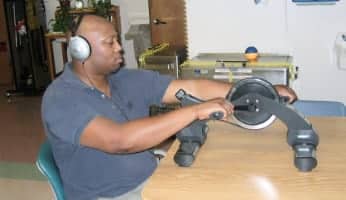Tara’s Journey to Independence: How IM Improved Motor Coordination and Memory

Home - Testimonials - Pediatric Testimonials - Tara’s Journey to Independence: How IM Improved Motor Coordination and Memory

Tara’s Journey to Independence: How IM Improved Motor Coordination and Memory
at the time Tara started with Interactive Metronome, she was a 14-year-old girl who faced motor coordination challenges, and also had problems with memory, recall, and environmental auditory and motor processing.
It affected her independence, as her inability to take directions and follow routines affected her ability to care for herself.
Initial Assessment
When Tara had her initial assessment in July of 2007, she scored “average” or “below average” on only three of the 14 given tasks. Of the remaining 11 tasks, she scored as dissociative on eight of them and on three she showed severe deficiency.
Follow Up Assessment Progress
But when she took her next assessment just a month into the Interactive Metronome program, Tara had moved out of all negative ranges, with five of the 14 tasks within exceptional range and nine tasks within superior range.
In face, after only a few Interactive Metronome sessions, Tara was able to complete a movement sequence independently, and adjust her rate of response to reflect the tempo of each exercise more accurately, while using her upper and lower extremities independently.
Tara continued to make significant progress throughout her Interactive Metronome sessions. Her average rate of response on the Interactive Metronome went from 290.2ms in July to 21.8ms in September; from 89ms to 13ms in her response rate without guide sounds; and from 192ms to 33ms with guide sounds.
Improvements in Other Tasks
Her improvement on the Interactive Metronome translated to other tasks as well. Overall, Tara was now able to accurately initiate motor tasks, as well as sustain them over time. Her large gains between her initial session and interim assessment are characteristic of her improvements with the independent initiation of motor tasks.
On the Bruininks-Oseretsky Test of Motor Proficiency, Tara also made great strides after using Interactive Metronome. Tara’s performance improved in three areas (Fine Motor Precision, Find Motor Integration, and Manual Dexterity), and scored within the average to above-average range for four out of five categories. During the test – just two months after she began her IM sessions – Tara showed tremendous improvements in attention to task, and had decreased need for verbal cueing to focus and repetition of directions.
Tara’s parents are also delighted with how much she improved. She can complete self-care tasks more efficiently, and needs fewer cues to accomplish her tasks. Even her strength and endurance has improved while carrying out motor coordination tasks. And she can now complete multiple-step tasks more accurately at home – and is now able to follow a recipe!
Amy Brennan, M.S., OTR/L




